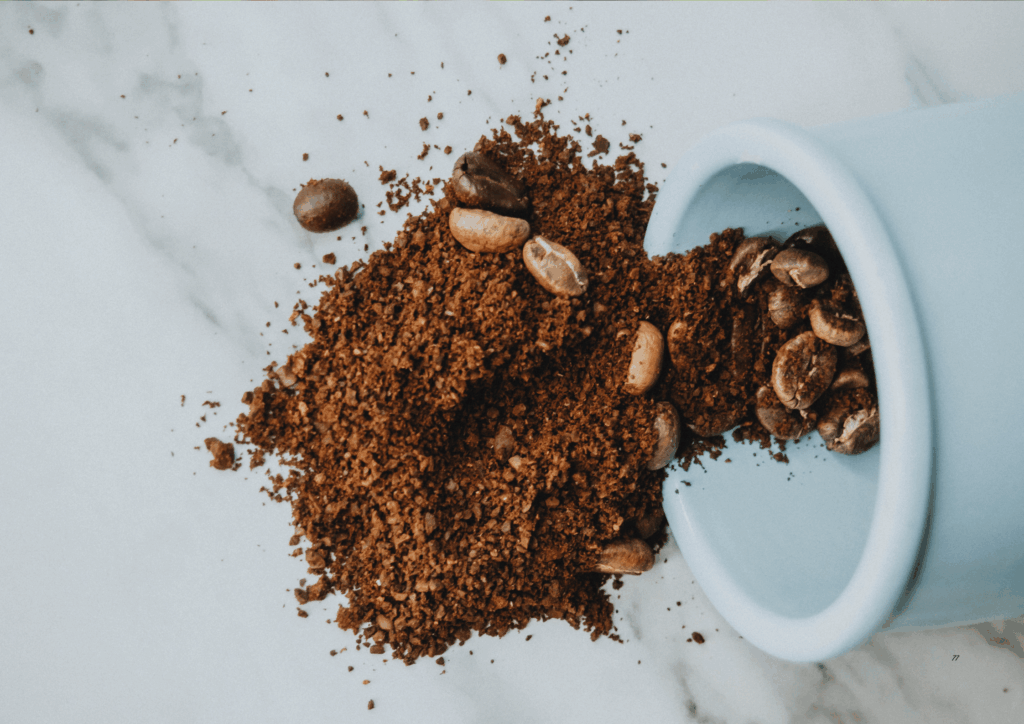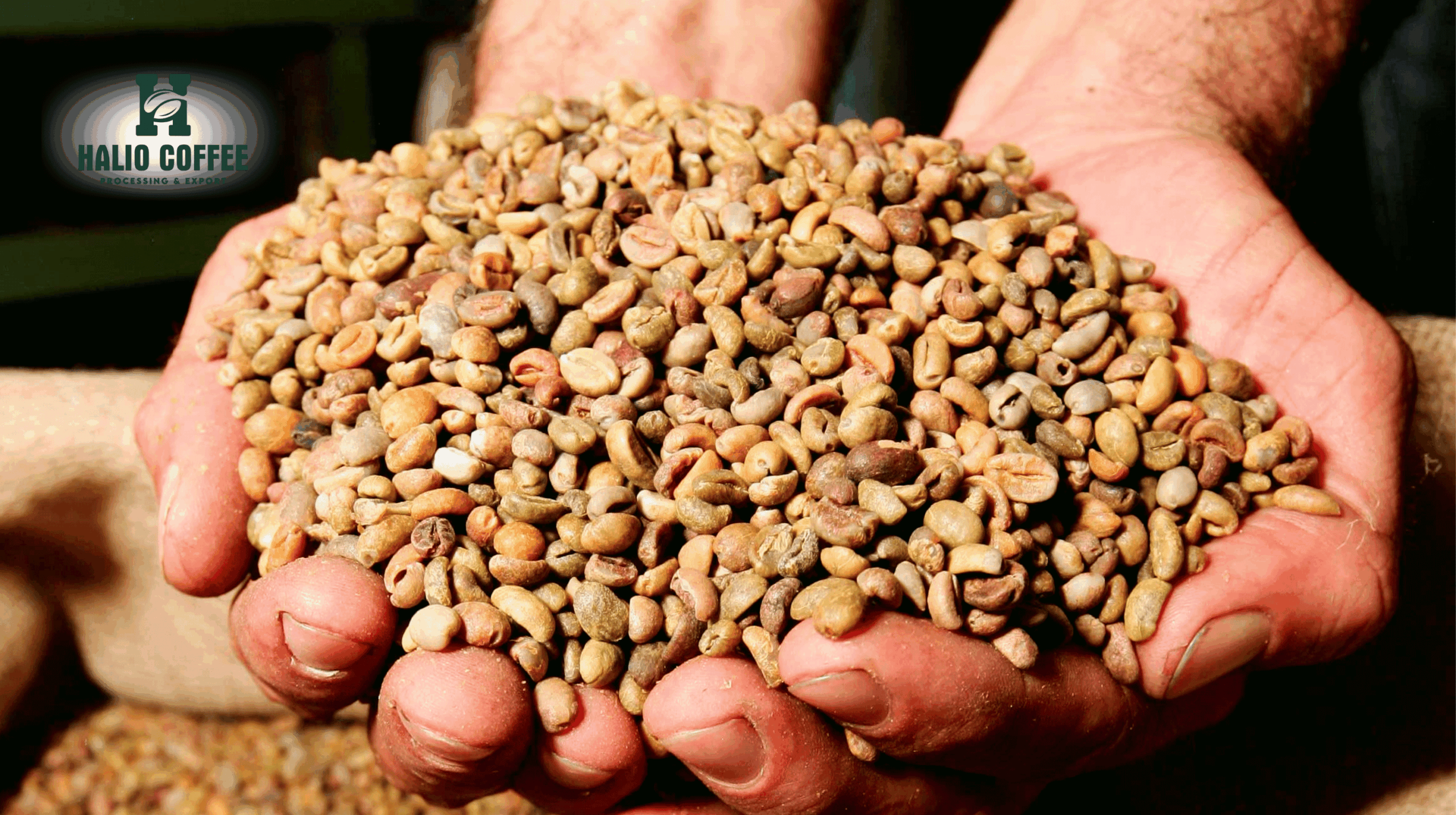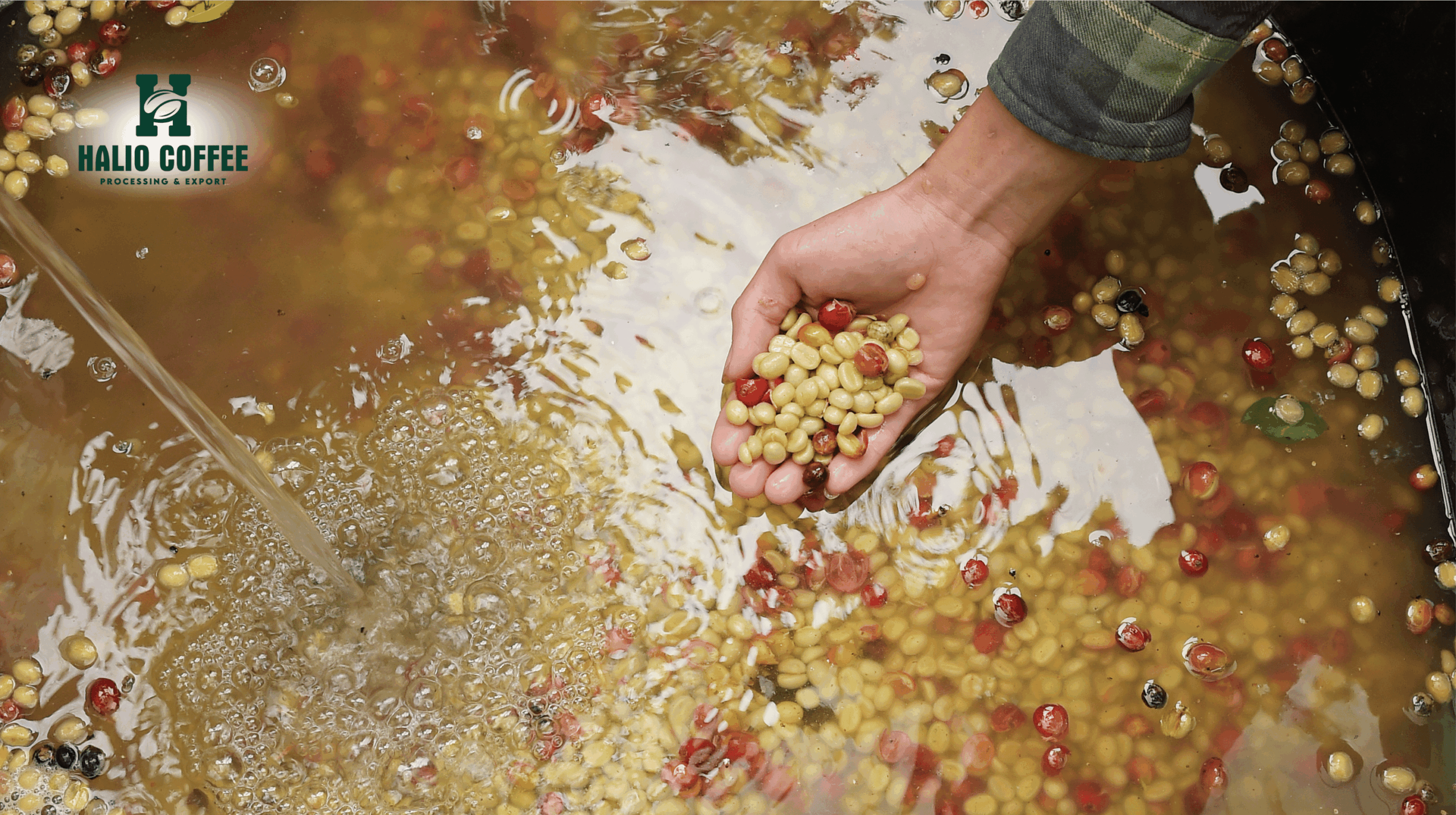Dry Processed Robusta Beans: An Industry Guide for Producers, Roasters, and Global Distributors
The coffee industry is at a turning point. While arabica has traditionally dominated conversations in specialty markets, Dry Processed Robusta Beans are gaining unprecedented attention from producers, roasters, and distributors worldwide. Once dismissed as a low-grade commodity crop, robusta is now being redefined through improved cultivation, processing, and global market positioning.
Vietnam—currently the world’s largest exporter of robusta—has played a transformative role in this shift. With innovations in natural (dry) processing and a rising demand for cost-effective yet quality-driven coffee, Vietnam’s robusta sector is influencing global supply chains in ways that can no longer be ignored.
This guide provides a deep, industry-level exploration of Dry Processed Robusta Beans, their characteristics, economic importance, processing methods, and opportunities for roasters and distributors. It also situates robusta within the broader landscape of global coffee trade and connects with the growing consumer preference for Whole Bean Coffee.
Vietnam’s Role in the Global Coffee Market

Production Scale and Market Share
- Vietnam is the second-largest coffee producer globally, after Brazil.
- Annual production averages 27–30 million 60-kg bags, of which over 90% is robusta.
- Vietnam supplies 40% of the world’s robusta exports, making it indispensable to global supply chains.
Key export destinations:
- European Union (47% of Vietnam’s exports).
- United States (9%).
- Japan and South Korea (combined ~12%).
(Source: International Coffee Organization, 2024)
For international buyers and distributors, this volume and reliability position Vietnam as a cornerstone of global robusta sourcing strategies.
Economic Contribution
Coffee is Vietnam’s second-largest agricultural export, generating between $3–4 billion annually. More than 2.5 million livelihoods depend on coffee cultivation, processing, and trade. The industry’s socio-economic footprint highlights the strategic importance of strengthening robusta’s global image and marketability.
See more:
- Vietnam Natural Robusta Coffee
- Sun-Dried Robusta Coffee Beans
- Halio Coffee – Your Trusted Fresh Coffee Distributor of Robusta & Arabica Beans
What Are Dry Processed Robusta Beans?
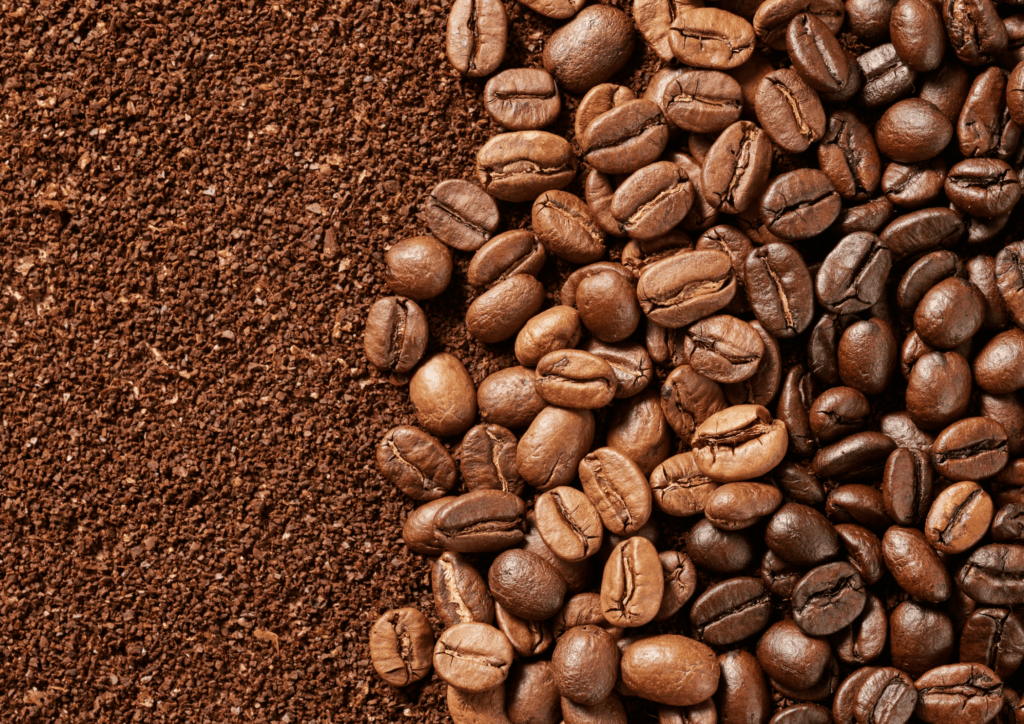
Natural (Dry) Processing Defined
Dry Processed Robusta Beans—commonly referred to as “natural robusta”—are produced by drying coffee cherries intact, without removing the pulp or mucilage. The process typically involves:
- Harvesting ripe cherries.
- Sun-drying them on patios or raised beds.
- Carefully managing fermentation and moisture levels.
- Hulling dried cherries to extract green beans.
This differs from washed (wet) processing, which requires substantial water input and yields a cleaner but often less complex flavor profile.
Characteristics of Dry Processed Robusta
- Flavor Profile: Heavy body, nutty undertones, low acidity, with chocolate and dried fruit notes when well-processed.
- Caffeine Content: Up to 2.7%, making it stronger than arabica.
- Crema Quality: Thick crema, highly valued in espresso blends.
- Shelf Life: Longer stability compared to arabica, useful for international logistics.
For roasters and distributors, these qualities provide versatility in blending, instant coffee manufacturing, and increasingly in specialty single-origin offerings.
Advances in Vietnam’s Dry Processing
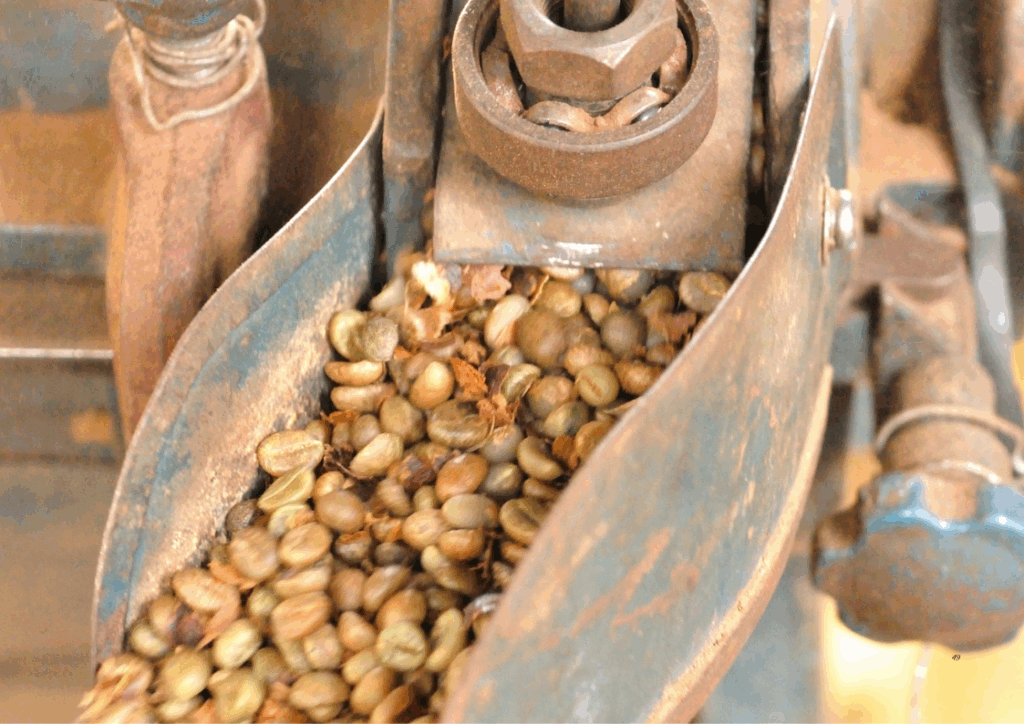
Raised-Bed Drying Coffee
Traditionally, robusta was dried directly on the ground or cement patios, often leading to inconsistent moisture and contamination. Recently, Vietnamese producers—particularly in Dak Lak, Gia Lai, and Lam Dong provinces—have adopted raised-bed drying coffee techniques, which allow for:
- Improved airflow, reducing mold risk.
- Even drying, enhancing consistency.
- Higher cupping scores, some reaching 80+ points on the Specialty Coffee Association (SCA) scale.
Cooperative and Farmer Training Programs
- Nestlé’s Nescafé Plan: Trained over 20,000 farmers in sustainable natural processing.
- Vietnam Coffee and Cocoa Association (VICOFA) initiatives: Promoting fine robusta through quality-focused drying and fermentation methods.
These programs are helping reposition robusta as a product of choice for more demanding roasters.
Dry Processed Robusta Beans in Global Trade
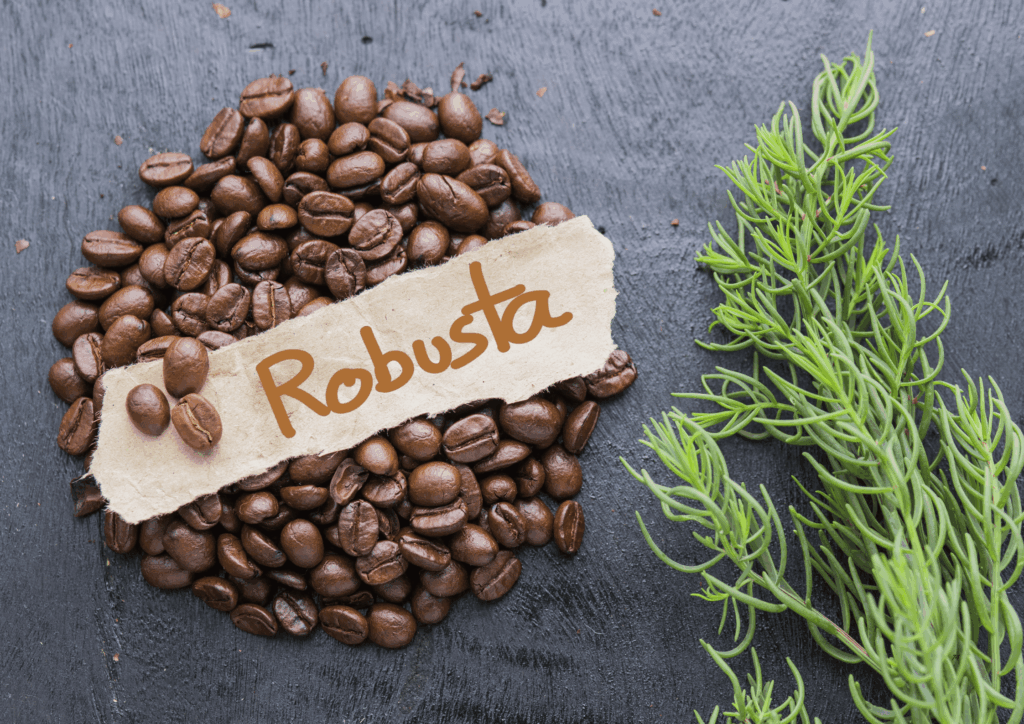
Key Applications
- Espresso Blends
- Adds crema and strength.
- Balances acidity in arabica-heavy blends.
- Instant Coffee
- Robusta’s solubility and caffeine content make it ideal for instant and ready-to-drink (RTD) markets.
- Specialty Coffee
- Growing segment interested in single-origin robusta with natural processing.
- Consumers attracted by bold flavors and traceable sourcing stories.
Case Study: Nestlé in Vietnam
Nestlé has invested over $700 million in Vietnam’s robusta sector, sourcing locally for both soluble and roast-and-ground coffee. By integrating Dry Processed Robusta Beans into their supply chain, they’ve secured stable input costs while also supporting farmer education.
Market Data and Consumer Trends

Global Coffee Market
- Market Size (2024): $132 billion (Statista).
- Robusta Demand Growth: CAGR of 3–4% (2022–2027).
- Specialty Robusta: Still a small share, but growing at double-digit annual rates.
Consumer Shifts
- Younger consumers are experimenting with robusta-based Whole Bean Coffee.
- Brands like Nguyen Coffee Supply (U.S.) and Black Sheep Coffee (UK) have built their identity around robusta.
- Specialty cafes are now offering robusta pour-overs and espressos, a trend unthinkable a decade ago.
Case Studies
Dak Lak Specialty Cooperatives
Farmers in Dak Lak province have adopted natural drying techniques, producing robusta that scores above 82 points SCA. Exported to European roasters, these beans are marketed as “Fine Robusta”, fetching 20–30% higher premiums compared to standard commodity robusta.
Black Sheep Coffee (UK)
This London-based chain differentiates itself by using 100% robusta from Vietnam in its espresso. Their brand narrative highlights strength, sustainability, and uniqueness—resonating with young urban consumers.
U.S. Tariff Impacts (2025 Outlook)
With recent U.S. tariff increases on Brazilian coffee, roasters are turning to Vietnam for competitive alternatives. Dry Processed Robusta Beans from Vietnam provide a hedge against supply disruptions, reinforcing the country’s role as a global stabilizer.
Opportunities for Producers, Roasters, and Distributors
For Producers in Vietnam
- Adopt natural drying with raised beds to achieve higher cupping scores.
- Partner with cooperatives to strengthen traceability.
- Target specialty buyers who are increasingly open to robusta.
For International Roasters
- Blend Dry Processed Robusta Beans with arabica to reduce costs while maintaining quality.
- Develop robusta-based Whole Bean Coffee products for adventurous consumers.
- Highlight sustainability and farmer stories in marketing.
For Distributors
- Secure long-term contracts with Vietnamese suppliers for stable supply.
- Invest in quality control infrastructure (moisture testing, storage).
- Explore niche markets in Europe, North America, and Asia for specialty robusta.
Data Snapshot: Dry Processed Robusta Beans
- Vietnam’s share of global robusta exports: ~40%.
- Annual output (2024): 1.6–1.8 million metric tons.
- Fine robusta price premiums: +20–30% vs. commodity robusta.
- Top importers: EU, U.S., Japan, South Korea.
- Cupping potential: Up to 83 points SCA for natural robusta (rare but growing).
- Coffee Prices Today, Nov 7: Prices Turn Down; What Are the Causes?
- The Definitive Guide to How to Buy Green Coffee Beans Direct from the Source
- The Passport of Profit: Mastering the Certificate of Origin for Vietnamese Coffee
- Coffee Prices Today, August 14: Robusta Surges Over $200/ton, Hits Two-Month High
- Coffee Prices Today, October 9th: Markets Reverse Course with a Strong Rebound
